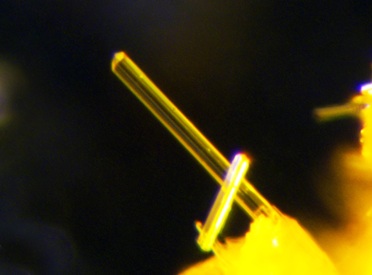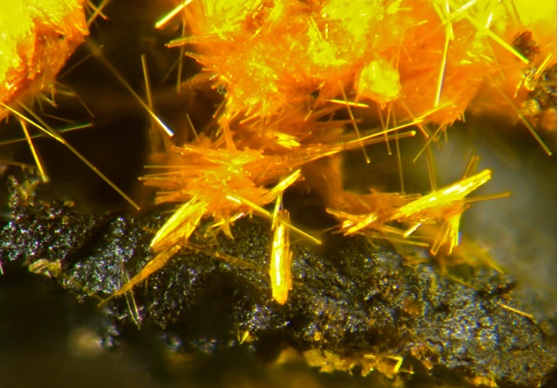Welcome to the Electron Microprobe Lab
 The laboratory provides high precision quantitative non-destructive analysis of solid
materials at the micron scale through electron beam X-ray spectroscopy. Our instrument
is a Cameca model SX-50 electron microprobe equipped with four wavelength-dispersive
X-ray spectrometers (WDS). Through a flexible array of diffracting crystals, the instrument
is capable of analysis of elements boron through uranium. WDS microanalysis provides
superior detection limits and spectral resolution to standard SEM/EDS systems. Under
nominal operating conditions, typical detection limits are 300 ppm, and precision
for major elements is on the order of 1% of the amount present. Recent developments
in analyzing trace elements allow for detection limits of <15 ppm, such as for trace
concentrations of titanium in quartz.
The laboratory provides high precision quantitative non-destructive analysis of solid
materials at the micron scale through electron beam X-ray spectroscopy. Our instrument
is a Cameca model SX-50 electron microprobe equipped with four wavelength-dispersive
X-ray spectrometers (WDS). Through a flexible array of diffracting crystals, the instrument
is capable of analysis of elements boron through uranium. WDS microanalysis provides
superior detection limits and spectral resolution to standard SEM/EDS systems. Under
nominal operating conditions, typical detection limits are 300 ppm, and precision
for major elements is on the order of 1% of the amount present. Recent developments
in analyzing trace elements allow for detection limits of <15 ppm, such as for trace
concentrations of titanium in quartz.
The Electron Microprobe Laboratory is part of the Department of Geology and Geophysics and is located in 384 FASB. The facility is open to academic users from across the University of Utah as well as researchers from other academic institutions, government agencies and industry.
For information on sample preparation, consult the Sample preparation page.
 Diverse Applications
Diverse Applications
Because an electron microprobe provides high precision quantitative analysis of solid materials down to the micron scale, the laboratory is involved in a wide variety of ongoing scientific investigations involving students and faculty collaborators from the U.S. and around the world as well as private corporate clients. Some of the current research projects using the lab include: tephrostratigraphy and tephrochrology applied to the evolution of early man in Africa, Holocene climate change in the western U.S., supereruptions from the Yellowstone hotspot, the history of Lake Bonneville, ore petrogenesis, origins of glaucony-bearing sediments, borosilicates in contact metamorphism, fusion of granitic inclusions in basalt, characterization of windblown dust particles, and analysis of new decavanadate minerals.
 Complimentary Analytical Facilities
Complimentary Analytical Facilities
In addition to the Electron Microprobe Laboratory, the Department of Geology & Geophysics has a complement of additional geochemical analytical facilities including two new Thermo Scientific NEPTUNE multicollector mass spectrometers that can be combined with an Eximer laser for in situ analysis of materials. The laser is also connected to an Agilent ICPMS for trace element analysis. Additional facilities include a QEMSCAN and X-ray diffraction. The Noble Gas lab has two mass spectrometers for isotopic measurements of the noble gases as well as most other common atmospheric gases.
 Frederick A. Sutton Building
Frederick A. Sutton Building
The electron microprobe has been moved to the new $27M, LEED-certified Geology & Geophysics Department building. The 91,000 square foot building, dedicated in the Spring of 2009, is the home of the Geology and Geophysics Department and features state-of-the-art classrooms, laboratories, and offices that foster collaboration and innovative research. Reinforced concrete construction eliminates significant vibration in laboratories designed for sensitive instruments.
